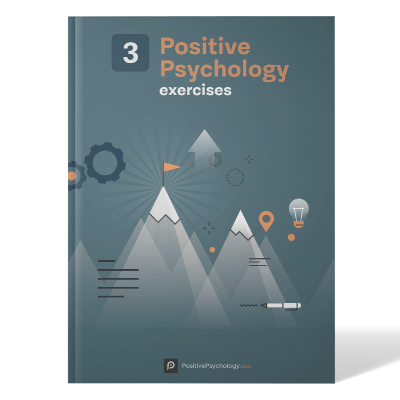What is Kaplan’s Attention Restoration Theory (ART)?
 Spending time in nature, by watching a sunset, gazing at the ocean or mountains, sitting in a park, escaping to the countryside or a nature retreat, or even just spending a few minutes to stare out the window, provides us with the opportunity to rest, reflect, and restore our very selves.
Spending time in nature, by watching a sunset, gazing at the ocean or mountains, sitting in a park, escaping to the countryside or a nature retreat, or even just spending a few minutes to stare out the window, provides us with the opportunity to rest, reflect, and restore our very selves.
You’ve likely noticed this phenomenon before; have you ever been having a rough day or feeling down but found yourself pleasantly distracted by a beautiful scene? I’m guessing you have at least one story of nature improving your state of mind.
This common experience demonstrates nature’s valuable role in our lives and hints at another potential role: contributing to overcoming mental fatigue and improving our ability to focus and direct our attention effectively.
The natural world is often depicted as a restorative environment that replenishes one’s resources, while busy, crowded urban environments have often been considered attention and energy drains (although not always—busy cities can be excellent places to find inspiration and energy when in the right frame of mind).
Although these beliefs were long held as simply opinions and personal views, the last few decades have seen some empirical work on the idea that natural environments can restore and rejuvenate us, boost our attention, and keep us healthier.
Considering that, if true, this idea has important implications for the workplace and everyday life, it is critical to examine if spending more time in nature can truly help us solve some of our most pressing modern problems.
To this end, it’s important to understand Kaplan and Kaplan’s Attention Restoration Theory.
Before you read on, we thought you might like to download our 3 Positive Psychology Exercises for free. These science-based exercises will explore fundamental aspects of positive psychology including strengths, values, and self-compassion, and will give you the tools to enhance the wellbeing of your clients, students, or employees.
This Article Contains:
What is Attention Restoration Theory?
In a nutshell, Attention Restoration Theory, or ART, proposes that exposure to nature is not only enjoyable but can also help us improve our focus and ability to concentrate (Ohly, White, Wheeler, Bethel, Ukoumunne, Nikolaou, & Garside, 2016).
This theory was developed and popularized by Stephen and Rachel Kaplan in the late 1980s and early 1990s, a time period characterized by rapid technological advancement and ever-increasing indoor entertainment. As people—and especially children—spent more and more time inside, concerns about the lack of time in nature grew.
ART hypothesizes that nature has the capacity to renew attention after exerting mental energy, for instance, after spending sleepless nights studying for exams, or working tirelessly on a project or assignment.
Rachel and Stephen Kaplan and the Experience of Nature

The book outlines their 20-year exploration on the importance of nature and the impact of natural environments on mood, state of mind, and health.
The authors aimed to answer some important questions about the topic, including:
- Is the effect of nature on people as powerful as it intuitively seems to be?
- What makes natural settings so compelling?
- Are there ways to design, manage, and interpret natural environments so as to enhance their beneficial influences?
If you finish reading this piece and find you’re still hungry for more information about ART, this book is a great next step. You can find it for sale on Amazon.
Restoration in Environmental Psychology
Restoration is a popular topic within environmental psychology, a field of psychology that intertwines with environmental disciplines to explore the dynamic connections between individuals and their surroundings.
One important interaction between individual and environment is the restoration of our attention, our energy, and ourselves by experiencing or viewing nature (Clay, 2001).
Interest in the subject has only been increasing as we spend more of our time indoors and less time out in natural environments. As the pace of life gets ever faster and busier, we environmental psychologists are on the lookout for ways that we can incorporate more restoration into our lives.
To that end, experts have researched and laid out some guidelines and information to help us understand how to take advantage of the opportunity nature provides for restoration.
The Four States of Attention
Stephen and Rachel Kaplan (1989) proposed that there are four cognitive states, or states of attention, along the way to restoration:
- Clearer head, or concentration
- Mental fatigue recovery
- Soft fascination, or interest
- Reflection and restoration
The first stage is characterized by a clearing of the mind. In this stage, the thoughts, concerns, worries, and residual bits of information from whatever was demanding one’s attention are allowed to pass through the mind and fade away. This is not achieved by “pushing” the thoughts away, but by simply letting them flow through and out of the mind naturally.
In the second stage, the real restoration begins; after a task or activity that requires focused and directed attention, it is easy to feel depleted and drained. The mental fatigue recovery stage allows that directed attention to recover and be restored to normal levels.
The third stage allows the individual to be gently distracted and engaged in a low-stimulation activity, which reduces the internal noise and provides a quiet internal space to relax.
In the final stage, evoked by spending a long period of time in an environment that meets all four of the requirements of a restorative environment (more on that later), the individual is able to relax, restore their attention, and reflect on their life, priorities, actions, and goals (Han, 2003).
The final stage is the deepest and most restorative stage; this is where the most impactful restoration takes place.
Key Components: Being Away, Fascination (Soft and Hard), Extent, and Compatibility
Now that we know the general process of restoration, we can move on to what makes an environment restorative; how do we know if an environment will help us restore, relax, and rejuvenate?
According to ART, there are four key components that characterize a restorative environment:
- Being Away
- Soft Fascination
- Extent
- Compatibility
Being Away
The first component is “being away,” which refers to the sense of being separate and apart from one’s usual thoughts and concerns. An individual does not have to be physically away to satisfy this component, but it can certainly be helpful.
To be away is to be psychologically detached from your present worries and demands, and distracted from the environment that is draining your attention and energy (Daniel, 2014).
Fascination
The fascination component of ART involves one’s attention being held without any effort expended. In other words, restorative environments hold your attention without you having to focus or direct it a certain way.
There are two kinds of fascination according to Kaplan:
- Hard fascination: when your attention is held by a highly stimulating activity; such activities generally do not provide the opportunity to reflect or introspect, since you are completely absorbed.
- Soft fascination: when your attention is held by a less active or stimulating activity; such activities generally provide the opportunity to reflect and introspect (Daniel, 2014).
Both types of fascination can contribute to greater restoration, although soft fascination features reflection and allows sense-making, while hard fascination is more likely to entertain and reduce boredom (Daniel, 2014).
Extent
This component refers to the quality of restorative environments that encourages you to feel totally immersed and engaged (Kaplan, 2001). It means that the environment does not have any unusual or unexpected features, and you feel comfortable and at ease in the environment.
An environment must be at least somewhat familiar and coherent in order for it to be restorative. In this context, familiar does not necessarily mean you have been to the exact environment before, only that it is similar enough to places you have been that you are not feeling uncomfortable, confused, or out-of-place.
Compatibility
Finally, the compatibility component is all about feeling enjoyment and congruence in your environment. To be restorative, an environment must be one in which the individual chooses to be out of intrinsic motivation and personal preference. If you are there for extrinsic or external reasons, you are not likely to experience restoration.
Compatibility is higher when you are engaging in an activity that is familiar to you; when you are engaging in a novel activity and learning a new skill or set of skills, you are unlikely to feel relaxed and restored (Daniel, 2014).
Kaplan also notes six other dimensions or aspects of compatibility:
- Distraction (the environment should not be distracting because it is highly stimulating, but because it requires little effort to sink into)
- Deficit of information (a restorative environment does not require the individual to search for information to make sense of it; the individual should already have all the information needed to understand and enjoy the environment)
- Danger (the environment cannot be dangerous in any sense of the word: whether physically or due to fear of looking foolish or acting inappropriately)
- Duty (the individual should not feel drawn to the environment out of a sense of duty or responsibility, but out of a desire for enjoyment and restoration)
- Deception (the individual should not be experiencing a discrepancy between the task they are doing and their true feelings about it)
- Difficulty (the environment must not be one in which individuals need to prepare or anticipate difficult situations to navigate; Daniel, 2014).
Research and Studies
Over the past three decades, researchers have increasingly tested the Attention Restoration Theory and experimented with its boundaries.
Some of the most important findings from these studies have been found in three separate areas:
- Mental fatigue
- Stress recovery
- ADHD
A few of the studies and their findings are discussed below.
Mental Fatigue and Attention Restoration Theory
Studies based on the Attention Restoration Theory have found some good evidence to back up ART’s proposal about nature restoring attention.
An early study by Hartig, Mang, and Evans (1991) compared two groups of vacationers and a control group on performance in a task that requires high directed attention. One vacation group vacationed in an urban area, while the other vacationed in a wilderness area. All groups were tested twice, once before the vacation (or at the beginning of the study period for the control group) and once after (or at the end of the study period).
Hartig and colleagues found that those who spent their vacation in a wilderness area performed better on the task than they had pre-vacation, while the other two groups actually performed worse than before. This provided solid initial evidence that ART had some merit as a theory of attention restoration.
Next, Hartig and colleagues tested participants in three groups:
- The natural environment group, which completed attentionally fatiguing tasks then walked for 40 minutes in a natural environment.
- The urban environment group, which completed attentionally fatiguing tasks then walked for 40 minutes in an urban environment.
- The passive relaxation group, which completed attentionally fatiguing tasks then relaxed for 40 minutes while listening to soft music and reading magazines.
Again, those in the natural environment outperformed those in the other two groups. They also reported the highest “restorativeness” score based on self-report measures of the four key components of restorative environments (Hartig, 1991).
More recent work on the subject comes from Rita Berto, who induced mental fatigue in participants through a sustained attention test, then exposed them to photographs of restorative environments, non-restorative environments, or geometric patterns (2005).
Once participants had viewed the photos, they completed the sustained attention test once again. Those who were exposed to restorative photos improved their performance on the task, whether they viewed the photos for a set period of time or were self-paced, while those in the other groups did not.
Finally, researchers Carolyn M. Tennessen and Bernardine Cimprich (1995) investigated whether simply having a better view of nature can improve one’s attention and boost restoration.
They compared university students’ performance on tests of directed attention based on the degree of nature in the view from their dormitory window. Those who were able to view more nature outside their window performed better on the battery of tests than those without, providing further support for the theory.
These studies showed that ART had promise for explaining how spending time in nature can help us restore our attention, especially after depleting that attention. However, the evidence doesn’t stop there.
Using Attention Restoration Theory in Stress Recovery
There is also evidence that ART is correct in its proposal that restorative natural environments can aid in recovering from stress.
In a study involving participants in what is arguably the most stressful time of their lives, researcher Bernardine Cimprich found that recovering breast cancer patients who spent time in natural, restorative environments showed improved performance in attention-related tasks, higher likelihood to go back to work and to return to working full time, greater inclination towards starting new projects, and higher gains in quality of life (1993).
Even if time spent in natural environments is not a specially planned outing or conscious effort on the part of the individual, it can still benefit them.
Further evidence comes from a more recent study by researchers van den Berg, Maas, Verheij, and Groenewegen (2010). Their study showed that just having some green space around one’s home can help protect people from the negative health impacts of stress and particularly stressful life events.
Those with a high amount of green space around their home were less affected by a stressful life event and reported greater perceived mental health than those with little or no green space nearby.
For more evidence on how ART gets it right when it comes to stress recovery, see Rita Berto’s article “The Role of Nature in Coping with Psycho-Physiological Stress: A Literature Review on Restorativeness” (2014). This info-packed piece lays out a ton of evidence on how nature influences and restores us.
ADHD and Attention Restoration Theory
While work on the connection between natural, restorative environments and Attention-Deficit Hyperactivity Disorder (ADHD) is much younger than that on stress recovery and mental fatigue, there is some evidence that the Attention Restoration Theory can apply to those struggling with ADHD as well.
A study from 2011 compared the behavioral, emotional, and cognitive functioning of children with ADHD during visits to two different areas: a natural, wooded area and a built, small town area.
The children performed better on a concentration task when visiting the wooded area than when visiting the town, even though the town visit happened after the wooded area visit. In addition to the concentration task findings, the children generally reported more positive emotions and less behavioral problems in the wooded area than in the small town area (van den Berg & van den Berg, 2011).
Another study by researcher Laura Thal (2014) explored the effects of 20-minute walks in either a natural area or an urban area on measures of cognitive performance and symptoms of ADHD. In line with ART, those who completed the nature walk reported improved cognitive performance and reduce ADHD symptoms.
Further, their results on one of the cognitive performance measures were significantly higher than those who completed the urban walk. In addition to these improvements, those who walked in nature reported that their walk was more restorative than those who had walked in an urban environment.
The results from these studies and others like them suggest that simply spending a little more time in nature can ease the symptoms of ADHD for children and young adults who suffer from it. It may not replace medication (or perhaps it could?) but it certainly won’t hurt!
Nature Deficit Disorder

Nature Deficit Disorder is not a disorder in the sense that we think of most disorders we know about, like Obsessive-Compulsive Disorder (OCD) or Generalized Anxiety Disorder (GAD); that is, you won’t find Nature Deficit Disorder in the Diagnostic and Statistical Manual of Mental Disorders, or DSM (also known as the clinical psychologist’s Bible).
However, its absence from the DSM does not preclude it from our consideration. Instead of thinking of it in terms of a doctor’s diagnosis or medication to treat it, think of it as “a way to describe the psychological, physical and cognitive costs of human alienation from nature, particularly for children in their vulnerable developing years” (Louv, 2009).
The term “Nature Deficit Disorder” is not intended to gain official recognition, but to point out a deeper truth: “as part of our evolutionary heritage, human beings—both children and adults—have a profound need for time in wild, outdoor spaces, and we suffer when we don’t get it” (Weil, 2011).
While the disconnect between indoors and outdoors may not be at fault for every psychological and physical ill we suffer, it is almost certainly related to some of the modern “epidemics” of depression, obesity, and stress. At the very least, we should use “Nature Deficit Disorder” to remind us that it can’t hurt to get some more time out in nature!
To learn more about Nature Deficit Disorder, see Richard Louv’s book, Last Child in the Woods: Saving Our Children from Nature-Deficit Disorder.
9 Restorative Benefits of Nature
As we noted earlier, natural environments have the capacity to restore your attention, improve your performance on tasks, and improve your resistance to and recovery from stressful life events.
However, there are even more restorative benefits of nature. Here are just a few:
- A view of a natural setting outside your window can help you make a speedier recovery with less drugs required than a view of a built environment (Ulrich, 1984).
- Simply experiencing nature sights and sounds (even artificially through paintings and recordings) allowed patients to get through a flexible bronchoscopy with less pain (Diette, Lechtzin, Haponik, Devrotes, & Rubin, 2003).
- Viewing videos of scenic beauty significantly reduces pain and anxiety in burn victims (Miller, Hickman, & Lemasters, 1992).
- People in an aged care facility who were exposed to nature for one hour per week experienced improved attention compared to elderly people who remained indoors (Ottosson & Grahn, 2005).
- Young adult residents with a view of nature from their home outperformed those who lived in an inner city on tests of attentional capacity and were less likely to show aggression (Kuo & Sullivan, 2001).
- Employees who could view nature from their window reported fewer physical ailments and greater job satisfaction than those without a nature view, two factors which also influence life satisfaction (Kaplan, 1993).
Although some have also suggested that exposure to nature has beneficial effects on problem-solving, there is still not enough information to make a conclusion on this question. Future research should utilize random assignment to one of three conditions (restorative nature, urban, and control group), induce mental fatigue in each group, then compare performance on problem-solving tasks.
It has been reliably reported that the natural environment is the most effective in renewing our resources, due to the process of increasing effortless reflection.
Thus, exploring if restorative environments could promote problem-solving skills is worthy of investigation as it could possibly assist individuals to overcome mental ruts, frustration, stress, procrastination, etc., in addition to increasing positive emotions and the sense of productiveness, accomplishment, contentment, and satisfaction.
Common Criticism of Attention Restoration Theory
While there have been many studies reporting results that are in line with ART, there are also some studies with incomplete or mixed findings, and a few that do not offer support for ART at all (Ohly et al., 2016).
It seems that nature can indeed have positive effects on attention, cognitive performance, emotions, mood, and behavior, but the jury is not unanimous yet. More research is needed before coming to solid or sweeping conclusions.
Some additional criticism comes in the form of concerns about ART’s framework rather than the rigor of studies on the subject. Researchers Yannick Joye and Siegfriend Dewitte point out three main issues:
- Some of the principal aspects of ART are vague, underdeveloped, and lack clear operationalization (e.g., soft fascination).
- The main theoretical prediction of ART (that nature effects are recovery effects) has been hinted at but not thoroughly tested and supported, especially in terms of the “bottom-up attention” mechanism through which ART predicts restoration occurs.
- There is little evidence to suggest that ART’s assumption that restoration is an evolutionary and adaptive human response (2018).
On a more specific level, Joye and Dewitte pose four questions that they hope to see ART address one day:
- How do fleeting episodes of bottom-up attention support restoration?
- Why does hard fascination preclude reflection?
- Why is soft fascination required for ART?
- Why are fascinating stimuli relatively effortless rather than effortful? (2018)
The authors raise some good points, and remind us that just because a theory sounds good or is in line with our personal views (e.g., that it’s good to spend time in nature), that does not excuse them from the requirement of scientific rigor and a solid foundation of evidence.
However, the theory is promising, and the jury is still out on just how many of its points are accurate and supported by research.
A Take-Home Message
If it’s true that natural environments can improve our attention, boost our problem-solving skills, increase positive emotions and reduce the impact of stress, it would be a significant point in favor of incorporating natural settings in the workplace, in colleges and universities, and in urban environments in general.
On a more personal level, keep this research in mind the next time you are feeling exhausted, depleted, or simply down. It may be that one of the most easily accessible (and free!) resources of all could cure you of your ailments: just look out the window, view some scenic paintings or photographs, or plan a hike or nature walk the next chance you get.
I hope you find this information useful, and I hope you find experiencing more nature to be a simple but effective solution to some of modern life’s problems.
What are your thoughts on Attention Restoration Theory? Do you think nature is much more powerful than we think, or that perhaps there are alternative explanations for some of the research findings? Do you make it a point to spend some quality time outdoors? Let us know your thoughts in the comments section!
Thanks for reading, and remember to savor your next foray into nature!
We hope you enjoyed reading this article. Don’t forget to download our 3 Positive Psychology Exercises for free.
- Berto, R. (2005). Exposure to restorative environments helps restore attentional capacity. Journal of Environmental Psychology, 25, 249-259.
- Berto, R. (2014). The role of nature in coping with psycho-physiological stress: A literature review on restorativeness. Behavioral Sciences, 4, 394-409.
- Cimprich, B. (1993). Development of an intervention to restore attention in cancer patients. Cancer Nursing, 16(2), 83-92.
- Clay, R. A. (2001). Green is good for you. Monitor on Psychology, 32, 40. Retrieved from https://www.apa.org/monitor/apr01/greengood.aspx
- Daniel, R. M. (2014). The effects of the natural environment on attention restoration. (Unpublished master’s thesis). Appalachian State University, Boone, NC.
- Diette, G. B., Lechtzin, N., Haponik, E., Devrotes, A., & Rubin, H. R. (2003). Distraction therapy with nature sights and sounds reduces pain during flexible bronchoscopy: A complementary approach to routine analgesia. Chest, 123, 941-948.
- Han, K. (2003). A reliable and valid self-rating measure of the restorative quality of natural environments. Landscape and Urban Planning, 64, 209-232.
- Hartig, T. A., Mang, M., & Evans, G. W. (1991). Restorative effects of natural environment experience. Environment and Behavior, 23, 3-26.
- Joye, Y., & Dewitte, S. (2018). Nature’s broken path to restoration: A critical look at Attention Restoration Theory. Journal of Environmental Psychology, 59, 1-8.
- Kaplan, R., & Kaplan, S. (1989). The experience of nature: A psychological perspective. Cambridge University Press.
- Kaplan, R. (1993). The role of nature in the context of the workplace. Landscape and Urban Planning, 26, 193-201.
- Kaplan, S. (1995). The restorative benefits of nature: Toward an integrative framework. Journal of Environmental Psychology, 15, 169-182.
- Kuo, F. E., & Sullivan, W. C. (2001). Environment and crime in the inner city: Does vegetation reduce crime? Environment and Behavior, 33, 343-367.
- Louv, R. (2009, January 28). No more “Nature-Deficit Disorder”. Psychology Today. Retrieved from https://www.psychologytoday.com/us/blog/people-in-nature/200901/no-more-nature-deficit-disorder
- Miller, A. C., Hickman, L. C., & Lemasters, G. K. (1992). A distraction technique for control of burn pain. Journal of Burn Care Rehabilitation, 13, 576-580.
- Ohly, H., White, M. P., Wheeler, B. W., Bethel, A., Ukoumunne, O. C., Nikolaou, V., & Garside, R. (2016). Attention Restoration Theory: A systematic review of the attention restoration potential of exposure to natural environments. Journal of Toxicology and Environmental Health, Part B, 19, 305-343.
- Ottosson, J., & P. Grahn. (2005). A comparison of leisure time spent in a garden with leisure time spent indoors: On measures of restoration in residents in geriatric care. Landscape Research, 30, 23-55.
- Tennessen, C. M., & Cimprich, B. (1995). Views to nature: Effects on attention. Journal of Environmental Psychology, 15, 77-85.
- Thal, L. (2014). Attention-deficit hyperactivity disorder and exposure to nature in college students. Parks, Recreation, and Tourism Electronic Theses and Dissertations. Retrieved from https://hdl.handle.net/10355/44338
- Ulrich, R. S. (1984). View through a window may influence recovery from surgery. Science, 224, 420-421.
- Van den Berg, A. E., Maas, J., Verheij, R. A., & Groenewegen, P. P. (2010). Green space as a buffer between stressful life events and health. Social Sciences & Medicine, 70, 1203-1210.
- Van den Berg, A. E., & van den Berg, C. G. (2011). A comparison of children with ADHD in a natural and built setting. Child: Care, Health and Development, 37, 430-439.
- Weil, A. (2011). Is nature deficit disorder real? Dr. Weil – Healthy Living. Retrieved from https://www.drweil.com/health-wellness/balanced-living/healthy-living/is-nature-deficit-disorder-real/
Let us know your thoughts
Read other articles by their category
- Body & Brain (41)
- Coaching & Application (49)
- Compassion (27)
- Counseling (46)
- Emotional Intelligence (23)
- Gratitude (16)
- Grief & Bereavement (19)
- Happiness & SWB (35)
- Meaning & Values (26)
- Meditation (21)
- Mindfulness (42)
- Motivation & Goals (42)
- Optimism & Mindset (33)
- Positive CBT (24)
- Positive Communication (21)
- Positive Education (41)
- Positive Emotions (28)
- Positive Psychology (33)
- Positive Workplace (38)
- Relationships (31)
- Resilience & Coping (33)
- Self Awareness (21)
- Self Esteem (38)
- Software & Apps (23)
- Strengths & Virtues (28)
- Stress & Burnout Prevention (27)
- Theory & Books (42)
- Therapy Exercises (30)
- Types of Therapy (53)





What our readers think
I found the article very interesting with potentially lots of merit. Even if more study was not undertaken for me I have already experienced this many times but need more opportunities to experience it. It’s a double edged sword as our lives are so busy and stressful and we need to experience nature more but time becomes a negative factor. However with anything worth doing you will make it work and that I will do. When I am experiencing nature I want to tell everyone how wonderful it is as I get this feeling inside that excites me but also I want more people know and appreciate the benefits. The other drawback is I want to live in many of the places I have been but that will never happen. So I am going to continue this more and thanks for the article as it makes sense, basic and achievable for most people. Now getting it over the line as a recognised THERAPY, if I can help in any way let me know as would be pleased to assist. I have previously worked in psychology field. Take care and good luck.
Dealing with ADHD, anxiety and depression my entire life, I can say with 100% certainty that being in nature, by the beach, in the woods, or even just driving down a winding, country road makes me much more centered and able to de-stress, decompress and focus. My daughter is getting her Master’s in Psych and she recommended I read the article. Confirms my beliefs!!!! Thanks for publishing this –
Thank you so much for this great article. I feel like i have been given a serious introduction and it is scientifically based. Thank you for the work you provided.
Thankyou so much. Useful info.
Do you have any powerpoint presentation slides / PDF based on this ART topic?
Hi Sanjai,
Glad you liked the post. I’m afraid we don’t typically create slides to accompany our posts. If you’re looking to share this information with others, you can scroll to the end of the post and respond positively to the question ‘How useful was this article to you?’ Once you do that, several sharing options will become available to you.
Hope this helps!
– Nicole | Community Manager
Dear Courtney,
Thank you very much for all the effort and scientific rigor put on this article. It is truly inspiring for me (and many others science lovers) to access content of such quality for free. Your writing comes to me in a very informative, positioned yet humble and transparent way.
Adding a full section about counterpoints emerging from the scientific dialog on this topic made my day. This is what science is truly about.
Best,
Joao Rodarte
Can I cite this page for my assignment?
Hi Hassan,
Of course! Here’s how you’d reference it in APA 7th:
Ackerman, C. E. (2020). What is Kaplan’s Attention Restoration Theory (ART)? PositivePsychology.com. Retrieved from https://positivepsychology.com/attention-restoration-theory/
Good luck with your assignment!
– Nicole | Community Manager
Dear Courtney,
I do think nature is more powerful than we think. I spent much of my childhood playing daily in my family’s vast woodlands, finding lady slippers, making sculptures with driftwood and moss, jumping over streams, frog ponds, finding arrow heads, learning about plants, watching birds and learning from them, etc. In my adulthood, I have yearned for that often and have continued to be nurtured or healed in nature; my yard or traveling in nature. We humans are part of nature, in killing nature we are killing ourselves. It is vital that children get off computers and into nature to appreciate it,
learn from it and preserve it. It enhances creativity. This virus is nature guiding us where we need to go. nature is out teacher, through bird behavior, water flow, sun, wind, trees, all of it. Can we listen?
Courtney,
This was a very interesting read for me. As an architect and interior designer, I am often looking at ways to design spaces that offer restorative influences on the users of the space. I am looking into the range of ways to use biophilia as part of space design as well as basic principles like Feng Shui, all connected to natural systems.
Doug
Thank you very much for the article. It collect all the relevant details together. so much helpful.